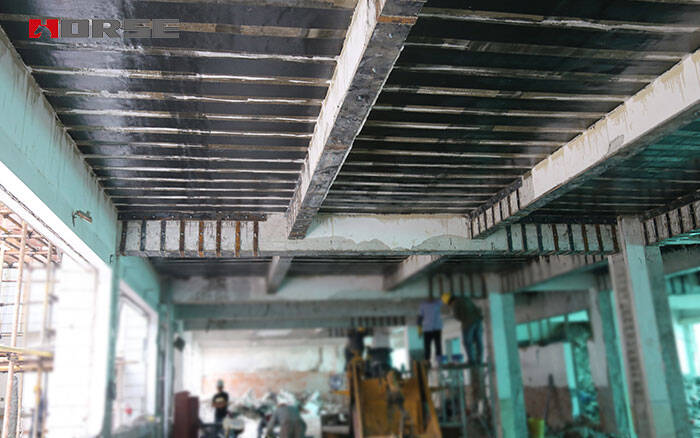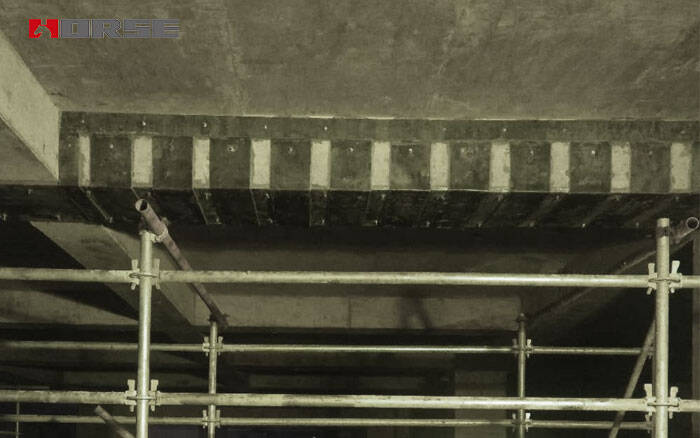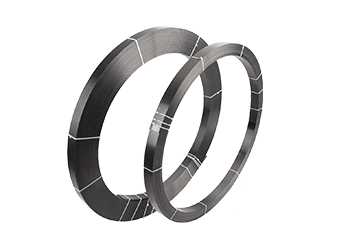Soluciones
La gama de negocios de construcción de caballos se extiende a todo el mundo y sirve a miles de clientes con productos, orientación técnica especializada en construcción, y somos testigos del reinicio de la marca china con ellos.
In structural reinforcement, FRP composite strengthening and steel plate strengthening are two commonly used methods in concrete structures. In the selection of reinforcement schemes, the two methods often appear simultaneously. From the point of view of the mechanism of action, the two reinforcement methods are formed by structural adhesive and concrete base material as a whole, and the two methods are similar in construction technology, often causing certain obstacles to the choice of methods.

In structural reinforcement, FRP composite strengthening and steel plate strengthening are two commonly used methods in concrete structures. In the selection of reinforcement schemes, the two methods often appear simultaneously. From the point of view of the mechanism of action, the two reinforcement methods are formed by structural adhesive and concrete base material as a whole, and the two methods are similar in construction technology, often causing certain obstacles to the choice of methods.
In fact, the similar reinforcement mechanism does not mean that the two party can choose at will. The mechanical properties of carbon fiber fabric and steel plate is different, so the FRP composite strengthening and steel plate reinforcement are different. The main difference between them is the reinforcement of beam bottom and comparative analysis.
Comparison of crack initiation
Whether FRP or steel plate is bonded, cracks will occur in the concrete of the tension zone at the bottom of the beam in the process of increasing load, and when there are old cracks in the base material, cracks are easy to occur in the old cracks first. Due to the limitation of the number of CFRP layers, the thickness will not exceed 0.7 mm, and the steel plate can be 5 mm thick by hand gluing. The cross-sectional area of the steel plate is much larger than that of CFRP in the same width. Therefore, the load of the beams strengthened with bonded steel is much higher than that of the beams strengthened with CFRP when cracks occur.
From the number of the main cracks, with the increasing load, bonded steel reinforcement is more than bonded carbon fiber cloth reinforcement, and carbon cloth reinforcement crack propagation and extension speed is relatively slow. CFRP is better in limiting cracks, and FRP compsoite materials is more suitable for crack resistance.

Comparison of deflection and deformation
The deflection is mainly related to the bending stiffness of beams. In structural reinforcement, sticking carbon cloth or sticking steel plate can enhance rigidity through two aspects. Firstly, the elastic modulus of FRP compsoite materials is close to that of steel plate, so the stiffness of FRP compsoite materials depends on the section area. In the comparison of cracks, it can be seen that the cross-sectional area of FRP compsoite materials is much smaller than that of steel plate, so the stiffness of the steel plate is much higher than that of FRP compsoite materials.
On the other hand, the original stiffness of beams can be maintained from the perspective of restricting the development of cracks. In this respect, FRP compsoite reinforcement has a higher limit on cracks, so it can better maintain the stiffness of the beam. However, the effect of increasing the stiffness by increasing the cross-section area is much better than limiting the crack maintenance stiffness. The concrete performance is that the deflection change of the beam strengthened by bonded steel is slower than that of bonded FRP compsoite, and the failure load of bonded steel is higher. That is to say, it is more effective to enhance the rigidity and flexural capacity of beams and strengthen with bonded steel plates.
Comparison of durability
Durability affects the long-term reinforcement effect of the structure. From the material point of view, the durability of steel plate is poor, easy to rust, and in structural reinforcement, steel plate thickness is thin, rust will significantly weaken the section or cause peeling damage. The durability of FRP compsoite materials is much better than that of steel sheet, but direct exposure to sunlight and harmful media should be avoided. In addition, structural adhesives have an impact on the durability of the two reinforcement methods. In a word, the durability of FRP compsoite materials reinforcement is better.
Puede encontrar cualquier cosa que necesite, confíe en probar estos productos y encontrará la gran diferencia después de eso.

Tejido de fibra de carbono unidireccional de alta resistencia para refuerzo de compuesto de polímero reforzado con fibra (FRP).

Lámina de fibra de carbono pultruída para reforzamiento de estructuras

Adhesivo de refuerzo estructural para revestimientos de acero.